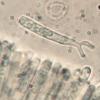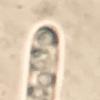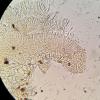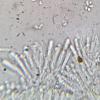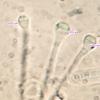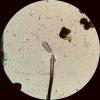
19-11-2025 23:21
 carl van den broeck
carl van den broeck
Dear guestIn Waardamme, Belgium, I found dozens of

19-11-2025 20:51
 Andreas Millinger
Andreas Millinger
Good evening,found this species on a felled trunk

19-11-2025 13:04
 Bruno Coué
Bruno Coué
Bonjour,je sollicite votre avis pour la récote

17-11-2025 21:46
Philippe PELLICIERBonjour,Récolté sur bois pourrissant de feuillu

16-11-2025 21:09
 Robin Isaksson
Robin Isaksson
Anyone recognize this acc. to pictures.? Found on

18-11-2025 13:59
Nogueira HéctorNovember 14, 2025 Brazuelo (León) SPAIN Hymenosc

17-11-2025 19:14
herman lambertApothécie discoïde 0.6 cm diam., orangeFace hym�

17-11-2025 21:57
Philippe PELLICIERBonjour,Récolté sur bois de feuillu mort dur, no

14-11-2025 16:26
 Marian Jagers
Marian Jagers
Hello everyone, On dead wood of Cytisus scoparius
I having a hard time identifying this Orbilia, so obviously this query is directed to Zotto, and I hope I can provide enough detail to get a identification.
Last weekend in upstate New York I was handed a piece of well rotted hardwood with a scattering of orange to pale orange-yellow or slightly orange-rose Orbilia fruiting bodies. There doesn't appear to be any margin.
Spores are small, ellipsoid, occasionally with one acute end. At first my interpretation of the spore body (given the poor optics of my current microscope) was lens shaped. But I don't think that is correct. SBs are more likely sub globose. Spore measurements: 2.3-2.4 x 1.5-1.7µm. The SB 0.5-1.0µm (the distortions of my optics may make the measurements a bit unreliable).
Asci sometimes truncate, h-shaped at the base, 22-33.5 x 3.0-3.6µm. The spores in the asci are sometimes arranged with the SBs facing laterally.
Paraphyses often capitate, the width reaching 3µm. Some refractive material at the apex.
Conidiospores. Here is part of my difficulty. This collection was rife with additional spore types which I am not always able to identify or accurately assign to the teleomorph. I have provided some images of some of th candidates. I even noticed one in a the 4th photo of an ascus.
My initial impression is that this could be Orbilia cejpii.
As always, thanks for the help!
Ethan



